
Enjoying
The people of Edo enjoyed attending events such as theater and sumo wrestling. They were also fond of woodblock prints, works of popular fiction, and other publications.
Kabuki
Kabuki was not only a form of entertainment representative of Edo, but also a powerful influence on society at the time.
- Dressing Room in Nakamuraza Theater, Sakaichō
- Tokyo Shiryō Collection 577-C10
-
This illustration depicts an Edo-period kabuki dressing room, showing actors and stagehands. The first floor of the dressing room was used by the stagehands, while the second and third floors housed the actors’ rooms.
-

- Showcase of New Actors in the Year of the Tiger, in the Style of a Guide to Sake Varieties From Profiles and Reviews of Kabuki Actors
- Kaga Collection 5970
-
This print is in the style of a riddle, likening Kabuki actors to celebrated brands of sake, accompanied by the actors' portraits, their salaries, and reasons for their inclusion. Actors’ costumes gave rise to fashion trends in Edo.
-


- Enseiin Jōsei Nitta Shinji
- Tokyo Shiryō Collection 5721-C83
-

- Column
-
This is a shinie print of the eighth-generation Ichikawa Danjūrō, who took his own life in 1854. A shinie is a portrait of the deceased accompanied by details such as the date of death. Gathered around the supine Danjūrō are not only grieving women but even a cat.
Sumo
Sumo wrestling was an immensely popular form of entertainment for the townsfolk of Edo
- The Ring at a Charity Sumo Tournament
- Tokyo Shiryō Collection 587-C37
-
This nishikie woodblock print depicts a charity sumo tournament in the closing years of the Shogunate government. In the late Edo period, these tournaments were held regularly twice a year and were open only to male spectators. In addition to wrestlers and referee in the ring, this print also shows the nakaaratame officials who served as tournament judges.
-

- Sumo Sugoroku
- Tokyo Shiryō Collection 5877-S1
-
A sugoroku board game with sumo as its theme. In addition to the wrestlers, it depicts related roles such as referees and ushers.
-
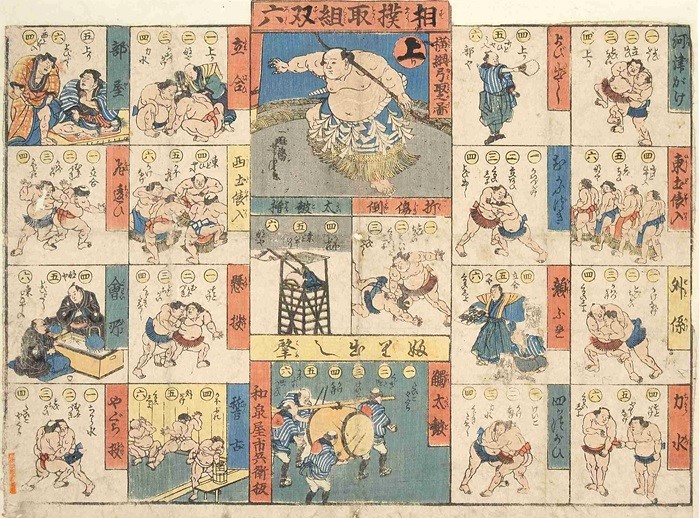
- Collected Illustrations of Vendors by Shimizu Seifū One-man Sumo
- Kaga Collection 356
-
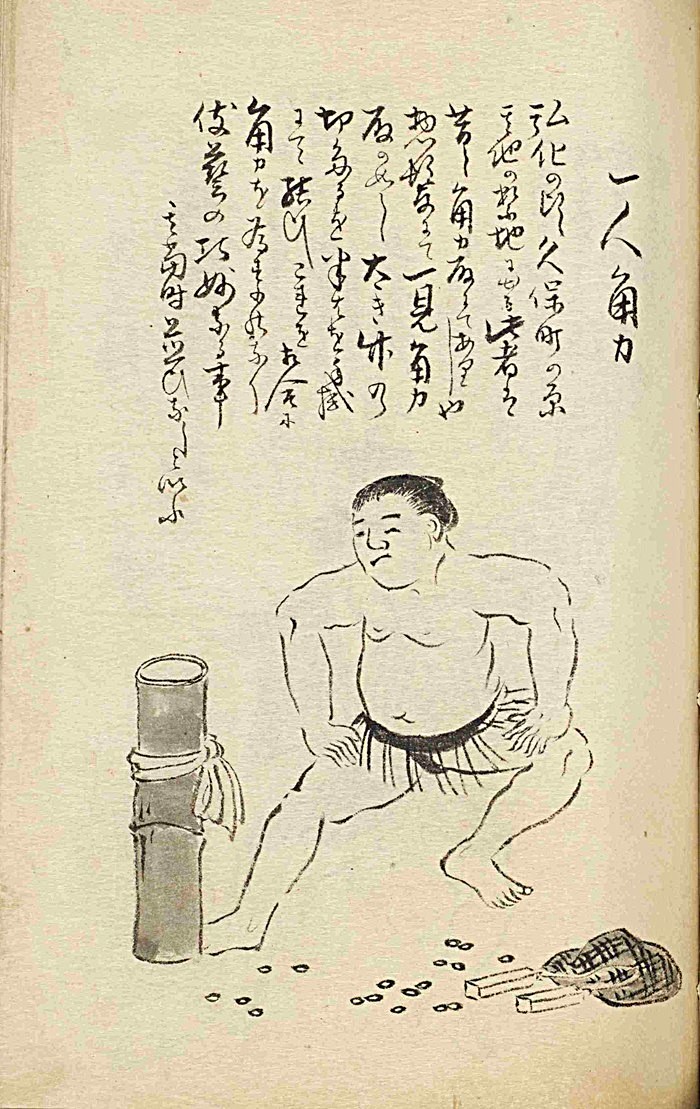
- Column
-
One form of street entertainment in the Edo period was hitori-zumō (one-man sumo), in which a single person acted out the roles of usher, referee, and wrestlers alike.
Public Entertainments
Various types of public entertainments known as misemono were held at temples and shrines in Edo and in the areas surrounding them.
- Hayatake Torakichi from Osaka, Performing at Ryogoku Hirokoji
- Tokyo Shiryō Collection 5893-C10
-
The major genres of misemono in Edo were "craft displays," "rare animal exhibits," and "acrobatics and feats of skill.” The Osaka acrobat Hayatake Torakichi became immensely popular in Edo and was depicted in numerous nishikie prints.
-
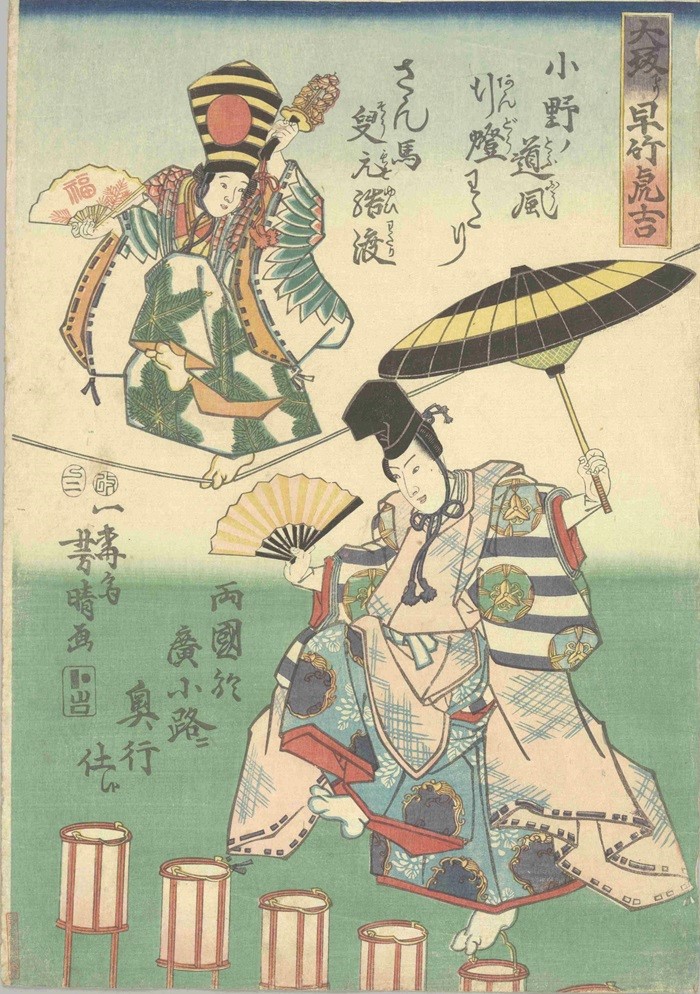
- Glasswork Boat
- Tokyo Shiryō Collection 5894-C11
-
Craft displays were one of the principal genres of misemono entertainments, and included items such as basketry and lifelike dolls. This is nishikie woodblock print depicts a glasswork display in Asakusa. Featuring mechanical devices, the display enjoyed great popularity.
-

Popular Fiction
A wide variety of popular fiction was published in Edo and enjoyed by many readers.
- A Smash Hit for the Local Book Trade (Atariyashita Jihon Doiya)
- Kaga Collection hako58-14
-
Booksellers in Edo were divided into shomotsu donya, who dealt in scholarly works, and jihon donya, who specialized in popular literature. This kusazōshi—a type of illustrated novel written in kana script—contains a detailed account of the process of producing popular fiction.
* doiya is called donya in general -
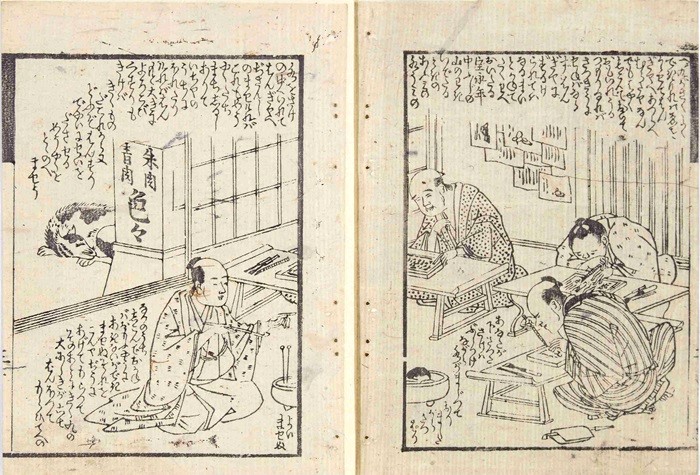
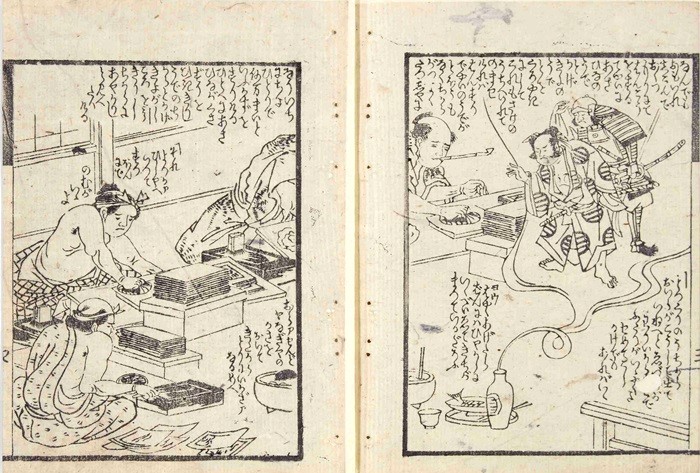
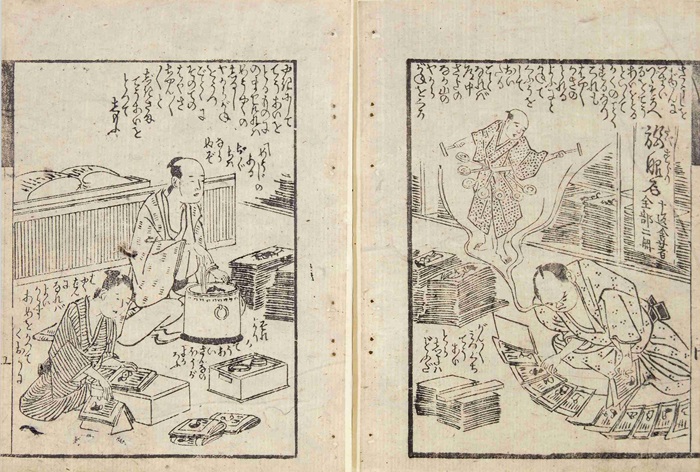
- Shikitei Sanba the Egotist: Gochō no Yume Illustrated Storybook
- Kaga Collection hako53-4
-
Included in a storybook by Shikitei Sanba, this illustration shows the front of a bookstore. The end of the Edo period saw the emergence of writers who made their living from manuscript fees, and ordinary townsfolk came to enjoy reading books borrowed from commercial book lenders.
-

Rakugo and Kōdan
In Edo at the end of the Shogunate, rakugo comic storytelling and kōdan historical storytelling were among the entertainments popular with ordinary townspeople.
- Rakugo Yearbook for the Year of the Tiger From Sen'un Saika: Album of Various Rankings
- Kaga Collection 403(51)
-
This print contains information about rakugo around 1854. Edo rakugo experienced a period of decline, but by the end of the Shogunate had become well established as a form of popular entertainment.
-
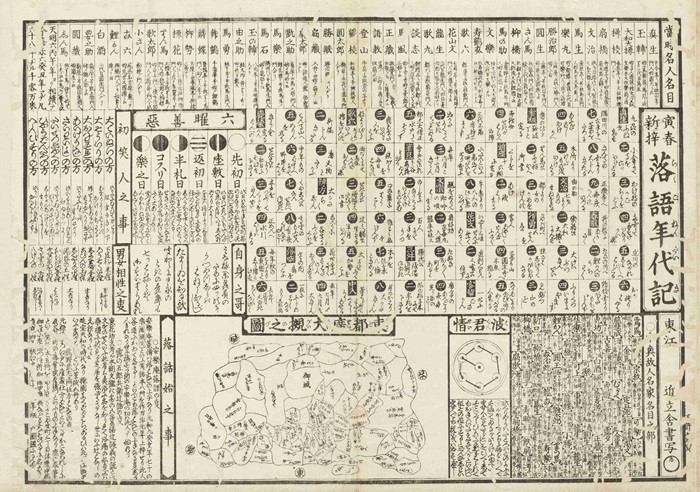
- Kōdan Storyteller
- Tokyo Shiryō Collection 1589-C2
-
Kōdan historical storytelling was in decline for some time, but had regained popularity by the end of the Shogunate. This illustration depicting a Kōdan recital is a satire on the political situation at the time.
-
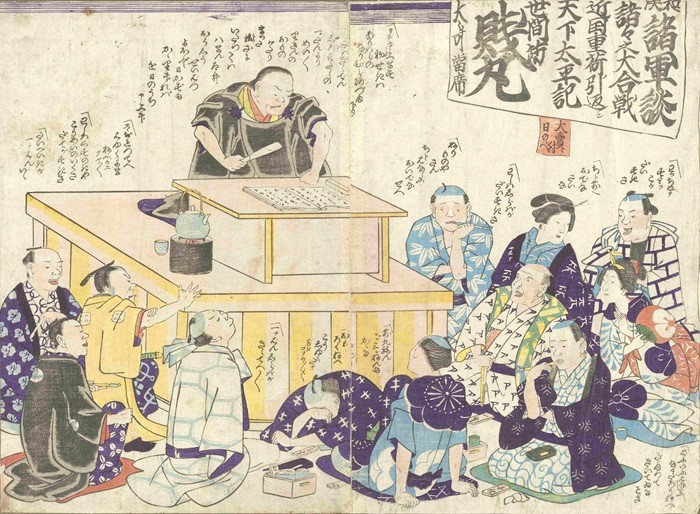
 文化財ウィーク
文化財ウィーク

